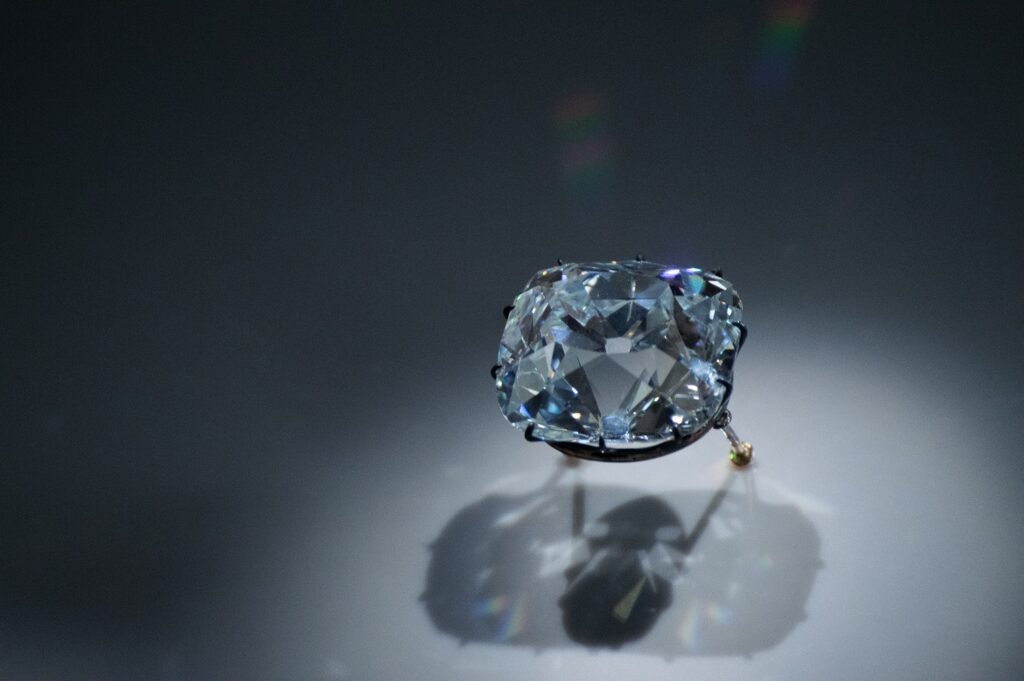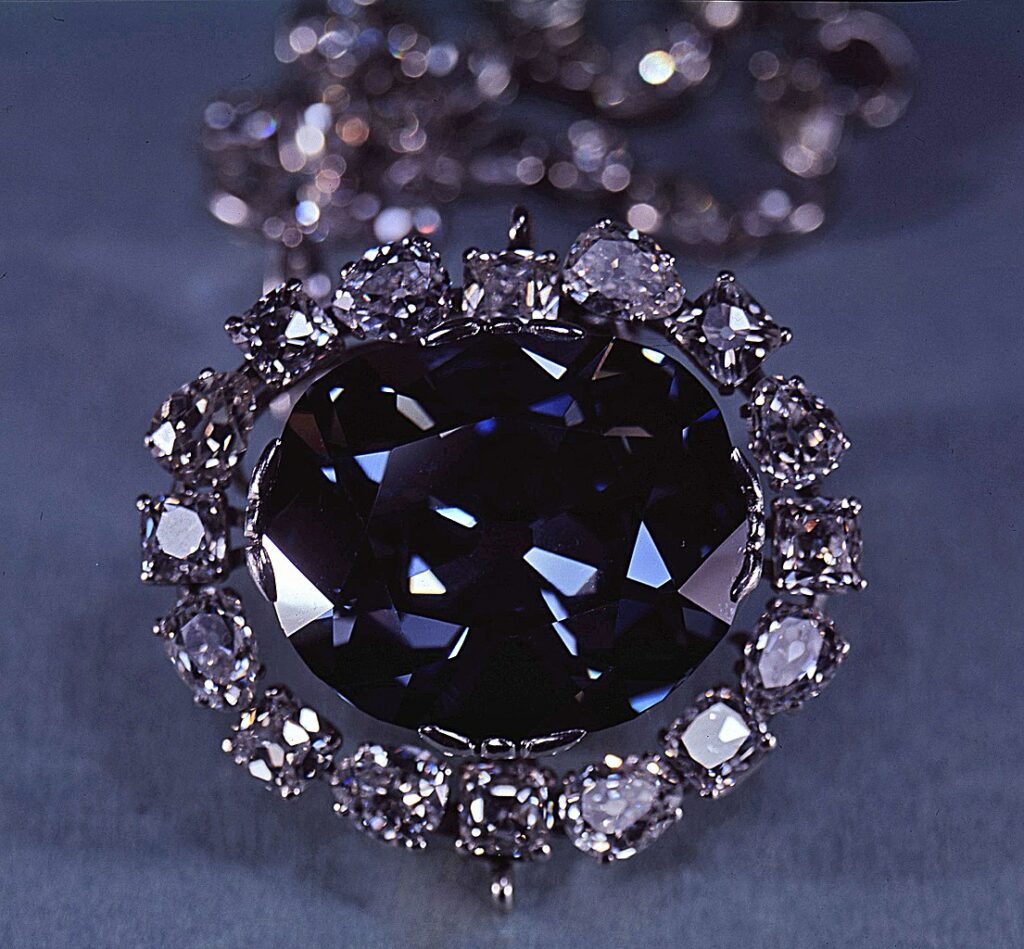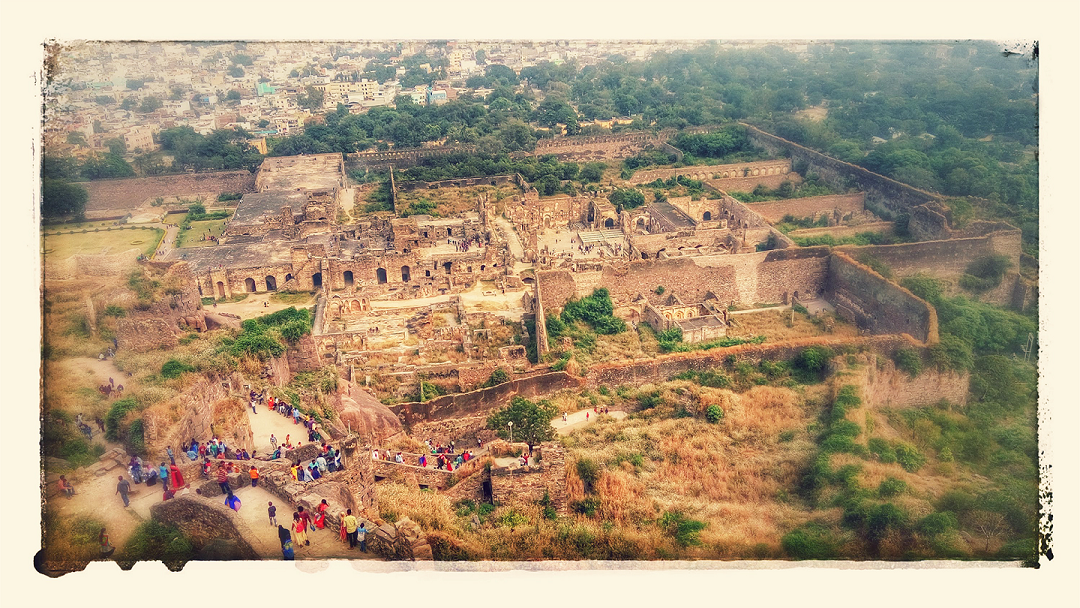Once upon a time, deep in the heart of India, some of the world’s most famous diamonds were found. These diamonds were known to be extraordinary. They came from the Golconda Mines, an area now known as Hyderabad located in Southern India. And at one time they were pretty much the world’s only source of diamonds.
Golconda Fort

The Golconda Fort, built in the 12th century, was an imposing structure that hosted the royal palace, homes of nobles, military people and a marketplace where diamonds were traded. The mines themselves were located a short distance from the fort, but were still part of Golconda. India was a known source for diamonds as far back as the Fourth Century BCE, but the Golconda region was particularly active. The country was the main source of diamonds in the world until the icy gems were discovered in Brazil in the 1720s and in South Africa in the 1860s.
Venetian merchant, explorer and writer Marco Polo and French gem dealer and adventurer Jean Baptiste Tavernier both traveled to the region and wrote accounts about the size and number of workers in the mines, noting that there were twenty some operational mines in the area and tens of thousands of workers. Polo was in India during the late 1200s and early 1300s, while Tavernier was there during the 1600s and the mines flourished through those centuries. However, the mines were running low by the 1700s and by the 1800s they were pretty much tapped out and by the early 1900s the mines were no longer producing stones.
The Benefits of Diamonds

Diamonds in India had a prominent place in the spiritual world of the royals. The gems were so important that only Kings and Brahmins, who were priests, were allowed to wear diamonds. Natural diamonds were considered to have many benefits, but they also had to have certain characteristics. The stones had to be set in their natural shape, the octahedral form was the most desired, it had to be inclusion free and very white so that when the stone sparkled and created a rainbow it activated the protective talismanic forces in the gem. It was thought that due to the optical effects created by the diamond, that it brought power from the Gods to the one wearing it.
Many historic diamonds are thought to be Golconda diamonds. The Koh-I-Noor, which is part of the British Crown jewels is on display at the Tower of London. The Hope diamond can be seen at the Smithsonian in Washington, D.C., and the Dresden Green, which lives in the Green Vaults in Dresden, Germany are also of Golconda origin. The Regent, the Great Mogul, The Wittlesbach-Graff and the Idol’s Eye are also considered to be from Golconda. One of the traits that set the diamonds from Golconda apart from others was that they tended to be large and often very clear, although some of the most renowned gems from those mines are colored diamonds.
The Gemology of Golconda Diamonds
It’s not just their mystical prowess that makes Golconda diamonds so desired, it is their gemological character that makes these gems remarkable. Diamonds from the Golconda mines are Type IIa, a particularly chemically pure form of the stone. Most diamonds have trace elements of nitrogen, which changes the light flow in the gem. A lot of nitrogen in the diamond will cause it to turn yellow.

Diamonds from the Golconda mine are nitrogen-free, making them especially transparent due to better light transmission from the lack of nitrogen. Due to their purity, Type IIa diamonds transmit light in way that other diamonds don’t and appear brighter and whiter than other diamonds. The appearance of Golconda diamonds is often compared to water. The transparency of these special gems gives them a “watery” appearance that has a dreamy quality to it.
While the Golconda mines were known for producing Type IIa diamonds, it is not the only place they have been found. Occasionally, a Type IIa diamond will pop out of another mine, but don’t hold your breath, only about 2 percent of all diamonds mined are Type IIa. While Type IIa diamonds from places other than the original mines are called Golconda, it is more of a modern marketing strategy than a true designator of country of origin. If someone says that a diamond is “Golconda Like” that is probably a good indication that the stone is Type IIa, but not actually from Golconda. Additionally, Golconda diamonds are generally found in antique or vintage jewelry, unless they have been taken out of an older piece and mounted in a contemporary setting.
Due to their exceptional rarity and beauty Golconda diamonds are highly desired and hard to find, capturing the imagination with their legendary history.
Top of Page: Golconda Fort, image courtesy Ravi Teja V, Wikimedia Commons.
Authored by Amber Michelle
